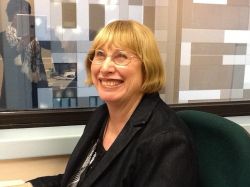Salvation Army statistics key to missing persons puzzle

The Salvation Army’s Family Tracing Service is in discussions with academics and other service providers to look at missing persons research projects.
The discussions have been held as part of National Missing Persons Week, during which representatives from The Salvation Army’s Family Tracing and Special Search Services attended special meetings to raise awareness about the number of missing people across Australia.
According to the Australian Federal Police, there are around 1600 long-term (more than six months) missing persons across Australia at any one time.
 Chris Cole, who is the coordinator of The Salvation Army’s Family Tracing and Special Search Services, NSW and ACT, says there needs to be an increased awareness that these people could be anywhere. He says they could be at your workplace, in your community, or even sitting next to you on the bus. “There’s a whole lot of people out there, of all ages, and some of them are just waiting to be found by their family,” Chris says.
Chris Cole, who is the coordinator of The Salvation Army’s Family Tracing and Special Search Services, NSW and ACT, says there needs to be an increased awareness that these people could be anywhere. He says they could be at your workplace, in your community, or even sitting next to you on the bus. “There’s a whole lot of people out there, of all ages, and some of them are just waiting to be found by their family,” Chris says.
A worldwide service for 126 years, The Salvation Army’s Family Tracing Service has been active in Australia since the 1920s. Chris says the Australia Eastern Territory has been keeping electronic records on its cases since the early 1990s, affording it an invaluable source of statistics for potential research into the area of missing persons.
“It’s a very narrow field and there hasn’t really been very much research done recently,” says Chris, who stresses that any statistics that are shared with academics will be non-identifiable.
“Research is so important to raise awareness … we have over 30,000 names and searches that were started and closed and some that are still active.”
While talks are still underway, Chris says the research could give authorities and service providers valuable information about what type of people go missing, what leads to family breakdown, and at what point people wish to be “found” or reunited with their family.
“I’ve just been going through all the old statistics and … just anecdotally I have noticed that most of the people who approach us to search for relatives are middle-aged and older,” he says.
“We have people in their 60s, 70s, 80s and 90s and a couple even 100 who just want to find their family members because, I guess, they’re realising their mortality. They want to do something before it’s too late.”
Comments
No comments yet - be the first.